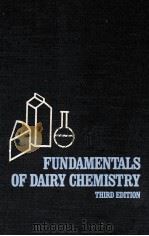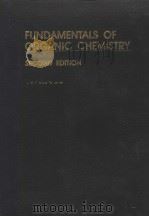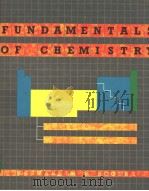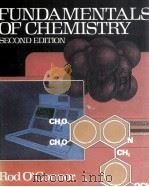《FUNDAMENTALS OF CHEMISTRY》
| 作者 | 编者 |
|---|---|
| 出版 | 未查询到或未知 |
| 参考页数 | 615 |
| 出版时间 | 没有确切时间的资料 目录预览 |
| ISBN号 | 无 — 求助条款 |
| PDF编号 | 819515528(仅供预览,未存储实际文件) |
| 求助格式 | 扫描PDF(若分多册发行,每次仅能受理1册) |
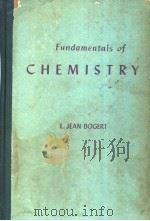
Chapter 1Fundamental Facts Regarding Chemistry,Matter,and Energy1
Development of Chemistry1
Matter and Energy3
Laws of Conservation of Mass and Energy4
Physical States of Matter6
Kinds of Matter7
Physical and Chemical Changes8
Elements,Compounds,and Mixtures9
Summary12
Chapter 2Chemical Elements and the Atomic Theory14
Metals and Nonmetals15
Occurrence and Physical States16
Chemical Symbols16
Atoms and Atomic Weights18
Atomic Structure19
Atomic Numbers vs.Atomic Weights22
Iso-topes23
Periodic Law and Families of Elements25
Radio-active Elements28
Elements with Atomic Numbers Greater Than 9228
Indivisibility of Atoms29
Chapter 3Compounds,Valence,and Chemical Formulas33
Formation of Chemical Compounds33
Molecules and Molec-ular Weights34
Composition of Compounds35
Elements Which Form Molecules36
Valence36
Valence in Electron Theory39
Covalence41
Formulas42
Quantitative Rela-tions in Formulas45
Chapter 4Chemical Changes and Equations47
Types of Chemical Change47
Interpreting Chemical Equa-tions48
Writing Chemical Equations49
Usefulness of Equa-tions51
What Equations Do Not Tell51
Chapter 5Two Important Elements:Oxygen and Hydrogen53
OXYGEN:KEY TO LIFE AND HEAT53
Occurrence53
Obtaining Pure Oxygen54
Physical Prop-erties56
Chemical Properties56
Oxides57
Oxidation58
Importance of Oxygen to Life59
Oxygen in Air59
Oxygen in Breathing59
Prevention of Oxygen Lack in Body61
Uses63
Ozone66
HYDROGEN-THE LIGHTEST ELEMENT66
Occurrence66
Obtaining Free Hydrogen67
Physical Prop-erties68
Chemical Properties69
Reduction70
Oxidation-Reduction70
Uses70
Chapter 6The Most Important of All Compounds:Water74
Water in Nature74
Water in the Body75
Importance of Physical Properties76
Chemical Properties77
Hydrates and Water of Hydration79
Important Uses81
Impurities in Natural Waters83
Removing Impurities from Water85
Hard Waters90
Water Softeners93
Chapter 7Classification and Naming of Inorganic Compounds96
Inorganic and Organic Compounds96
Significance of Names96
FOUR MAIN TYPES OF INORGANIC COMPOUNDS97
Oxides97
Bases98
Characteristic Properties99
Acids101
Acid Radicals102
Replaceable Hydrogen102
Characteristic Properties103
Applications of Properties of Acids(and Bases)104
Salts and Neutralization108
Most Numerous Group of Inorganic Compounds108
Different Classes109
Formation111
Neutralization112
Chapter 8More About Chemical and Energy Changes115
Important Facts about Chemical Changes115
Chemical Af-finity116
Agencies Which Start or Speed Up Chemical Changes116
Reversible Reactions and Chemical Equilibrium118
Reactions Which Continue Forward or Run to Completion119
Explanation in Terms of the Kinetic-Molecular Theory119
Energy Absorbed or Set Free in Chemical Changes120
Importance of Chemical and Energy Changes in the Human Body122
Chapter 9Combustion and Oxidation-Reduction125
COMBUSTION OR BURNING125
Essentials for Combustion125
Fire Prevention128
Starting a Fire129
Spontaneous Combustion129
Stopping a Fire130
Noncombustible Substances131
Combustion of Organic Mate-rial132
OXIDATION-REDUCTION133
Explanation in Terms of Electron Theory134
Oxidizing Agents and Their Uses134
Reducing Agents and Their Uses136
Oxidation-Reduction in Living Organisms137
Chapter 10Nitrogen and the Atmosphere140
NITROGEN140
Cycle in Nature141
Coaxing Atmospheric Nitrogen into Combination142
AIR147
Air a Mixture147
Components in Constant Proportions147
Components Variable in Amount148
Air Conditioning151
Uses of Chief Components151
Chapter 11Solutions153
What a Solution Is153
Uses and Importance154
Solutions of Gases,Liquids,or Solids in Liquids155
Solubility156
Determination of Amount of a Substance Going into Solution157
Speeding Up Solution159
Saturation159
Crystalliza-tion159
Supersaturation160
Heat of Solution161
Con-centration of Solutions161
Physical Properties of True Solu-tions163
True Solutions,Colloidal Solutions,and Suspensions166
Emulsions173
Colloids and Noncolloids in Living Or-ganisms174
Chapter 12Ionization:Further Discussion of Acids,Bases,and Salts178
Electrolytes and Nonelectrolytes178
Special Properties of Solutions of Acids,Bases,and Salts178
Theory of Ionization180
Ionization of Salts181
Ionization of Bases183
Ioniza-tion of Acids184
Hydronium Ions and a Newer Concept of Acids and Bases184
Degree of Ionization186
Application of Ionic Theory to Peculiar Properties of Aqueous Solutions of Acids,Bases,and Salts186
Physiological Importance of Ioniza-tion195
Chapter 13The Halogens and Other Nonmetals198
THE HALOGENS199
Fluorine,F2199
Chlorine,Cl2199
Bromine,Br2201
Iodine,I201
Bleaching and Disinfecting Action of Chlorine201
SULFUR:PROPERTIES AND USES203
PHOSPHORUS:ANOTHER ELEMENT ESSENTIAL TO PLANT AND ANIMAL LIFE204
CARBON AND SOME OF ITS IMPORTANT INORGANIC COMPOUNDS206
Important Compounds208
Chapter 14Uses of Inorganic Salts in the Body214
To Build and Repair Tissues215
To Assist in Maintaining Normal Osmotic Pressure Conditions219
To Maintain Normal Contractility of Muscles and Irritability of Nerves220
To Assist in Holding Substances in Solution in Body Fluids221
To Furnish Material for the Acidity and Alkalinity of the Diges-tive Juices221
To Assist in Maintaining the Neutrality of the Body222
Special Uses for Certain Elements222
Chapter 15Radioactivity,Nuclear Reactions,and Atomic Energy226
Dawn of the Atomic Era227
χ-rays228
Radioactivity230
Atom-Smashing Machines and Nuclear Reactions234
Artificial Radioactivity:Uses of Radioactive Isotopes237
Nuclear Fis-sion,Atomic Energy and the Atomic Bomb242
Chapter 16Introduction to Organic Chemistry249
Organic Compounds249
Differences between Organic Com-pounds and Inorganic Compounds250
Scope and Uses of Organic Chemistry254
Characteristic Structure of Organic Compounds255
Classes of Organic Compounds260
Chapter 17Hydrocarbons and Halogen Derivatives263
METHANE OR PARAFFIN SERIES263
Occurrence and Uses264
Physical and Chemical Properties268
HALOGEN DERIVATIVES OF METHANE SERIES270
Properties and Uses270
ETHYLENE AND ACETYLENE SERIES272
Properties273
Uses274
Polymerization275
CYCLIC OR RING HYDROCARBONS278
Chapter 18Ethers,Alcohols,Aldehydes,and Ketones280
ETHERS280
Properties and Uses281
Preparation283
ALCOHOLS283
Kinds284
Physiological Effects285
Chemical Reactions286
Uses289
Sources290
ALDEHYDES AND KETONES291
Intermediate Products of Oxidation-Reduction in Plants and Animals292
Properties294
Uses297
Chapter 19Organic Acids and Salts,Esters,Amines,and Amino Acids301
ORGANIC ACIDS301
Different Types302
Nomenclature303
Organic Acids in Foods304
Physical Properties306
Chemical Properties306
Strength308
Unsaturated Fatty Acids309
Uses of Organic Acids310
ORGANIC SALTS AND ESTERS311
Organic Salts311
Esters312
AMINES314
AMINO ACIDS316
Chapter 20Cyclic Compounds319
Differences between Open-Chain and Ring Compounds320
Occurrence in Plants and Animals320
CARBOCYCLIC HYDROCARBONS AND THEIR DERIVATIVES322
Benzene322
Different Positions in Benzene Ring and Order of Substitution326
Toluene and Xylenes328
Alcohols330
Phenols and Derivatives330
Acids,Salts,and Esters333
Sulfonic Acids336
Nitro Compounds337
Amino Compounds337
Sulfa Drugs338
CONDENSED CYCLICS AND HETEROCYCLICS339
Condensed Carbocyclic Compounds339
Heterocyclics with Five or Six Atoms in Ring339
Condensed Combinations of Benzene Ring with Pyrrole and Pyridine340
Purines and Pyrimidines340
Alkaloids and Their Medicinal Uses341
Chapter 21Chemotherapy and Modern Drugs346
Chemotherapy with Arsenic and Mercury Compounds347
Sulfa Drugs348
Antibiotics349
Antihistaminic and Anti-emetic Drugs352
Hypnotics(Sleep-producing Drugs)354
Tranquilizers and Drugs Used in Mental Disorders356
Central Nervous System Stimulants(Analeptic Drugs)358
Vasodila-tors or Antihypertensive Drugs359
Chapter 22Carbohydrates362
Formation,Occurrence,and Function362
Composition and Molecular Structure363
Classification365
MONOSACCHARIDES OR SIMPLE SUGARS366
Structure366
Physical Properties368
Chemical Properties369
DISACCHARIDES370
Physical Properties372
Chemical Properties373
POLYSACCHARIDES373
Physical Properties380
Chemical Properties381
Chapter 23Fats and Related Substances384
FATS384
Occurrence and Chief Function384
Composition and Nomen-clature385
Physical Properties386
Fatty Acid Content387
Chemical Properties388
SOAPS391
FATS IN THE ANIMAL BODY394
Composition and Properties of Animal Fats394
Uses of Fats in the Body394
SUBSTANCES RELATED TO FATS395
Waxes395
Lipoids395
Classification of Lipids397
Chapter 24Proteins and Amino Acids399
Definition and Occurrence399
Formation by Plants399
Pro-teins in the Animal Body400
Composition of Proteins401
Amino Acids402
Linkage of Amino Acids to Form Proteins405
Size and Structure of Protein Molecules408
Essential Amino Acids,Adequate and Inadequate Proteins410
Physical Properties of Proteins413
Chemical Properties of Proteins414
Precipitation416
Color Reactions418
Classification418
Summary of Functions of Protein421
Chapter 25The Vitamins423
Definition and Discovery423
Sources424
Number and Names424
Chemistry425
What Vitamins Do427
Vita-mins as Catalysts in Animal Tissues429
Measuring Vitamins and Body Requirements431
Vitamin A432
Vitamin B1 or Thiamine436
Vitamin B2 or Riboflavin439
Niacin440
Other Vitamins of the B-Complex442
Vitamin C or Ascorbic Acid445
Vitamin D448
Vitamins E and K452
Obtaining Optimum Amount of Vitamins454
Chapter 26Digestion and Enzymes456
DIGESTION456
Necessity for Digestion of Food456
General Description of Digestion457
Chemical Changes Occurring in Digestion458
Digestive Fluids459
ENZYMES466
Enzymes in General466
Nature and Properties466
Different Types467
Coenzymes468
Factors Affecting Enzyme Activity468
Digestive Enzymes469
Action of Bacteria in Digestion473
Conditions That Affect Digestion474
Chapter 27Transportation:Blood and Lymph478
Absorption of Digested Food Material Into Blood478
Func-tions of the Blood480
The Lymph481
Composition of the Blood482
Formed Elements484
Tissue Material of the Blood Plasma491
Nutritive Material in the Blood493
Waste Materials in the Blood495
Other Substances in the Blood497
Constancy of Blood Composition498
Regulation of the Re-action of the Blood498
Variations in Blood Composition as an Index to Disease501
Chapter 28Metabolism:Chemical Changes in the Tissues505
Nature of Metabolism505
Basal Metabolism506
Carbo-hydrate Metabolism508
Metabolism of Fats517
Metabolism of Proteins520
Summary525
ABNORMAL METABOLISM IN DISEASE527
In Diabetes527
In Liver Diseases529
In Acidosis and Asphyxia531
Disorders That Involve Deviations in Basal Metabolism531
Chapter 29Endocrine Glands and Their Hormones534
Endocrine System and Nature of Hormones534
Internal Secretion of the Pancreas:Insulin535
Thyroid Gland and Thyroxine539
Parathyroids543
Adrenal Gland Hormones544
Thymus and Pineal Glands548
Sex Gland Hormones548
Pituitary Gland551
Summary555
Chapter 30Elimination:Urine and Feces558
Function of the Excretory Organs558
How the Kidneys Secrete Urine558
Normal Constituents of Urine and Their Significance565
Nitrogenous Constituents565
Inorganic Salts567
Abnormal Constituents of Urine and Their Signifi-cance568
Tests for Kidney Efficiency571
FECES572
Composition572
Abnormalities572
Collection and Mark-ing573
Elimination of Metabolic Products by Intestinal Route573
MILK574
Appendix579
Table of Metric Measures with English Equivalents580
Common English Measures with Metric Equivalents580
Apothecaries’Weights and Measures withMetric Equivalents580
Conversion Factors for Weights and Measures581
Centigrade and Fahrenheit Thermometer Scales581
Temperature Conversion Tables582
Solubilities of Common Inorganic Compounds in Water583
Color Reactions of Indicators in Solutions of Different Hydrogen-Ion Concentrations584
Common Poisons and Their Antidotes585
Removal of Stains586
Index587
《FUNDAMENTALS OF CHEMISTRY》由于是年代较久的资料都绝版了,几乎不可能购买到实物。如果大家为了学习确实需要,可向博主求助其电子版PDF文件。对合法合规的求助,我会当即受理并将下载地址发送给你。
高度相关资料
-
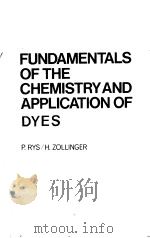
- Fundamentals of the Chemistry and Application of Dyes
- WILEY-INTERSCIENCE
-

- PSYCHOLINGUISTICS
- 1992年 JOHN BENJAMINS PUBLISHING COMPANY
-

- FUNDAMENTALS OF CHEMISTRY THIRD EDITION
- 1999 PRENTICE HALL
-
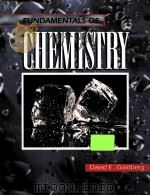
- FUNDAMENTALS OF CHEMISTRY SECOND EDITION
- 1998 MCGRAW-HILL
-

- FUNDAMENTALS OF THEORETICAL ORGANIC CHEMISTRY
- 1967 APPLETON-CENTURY-CROFTS
-
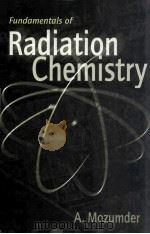
- Fundamentals of Radiation Chemistry
- 1999 ACADEMIC PRESS
-

- FUNDAMENTALS OF CARBANION CHEMISTRY
- 1965 ACADEMIC PRESS NEW YORK AND LONDON1
-

- FUNDAMENTALS OF ORGANIC CHEMISTRY FOURTH EDITION
- 1998 BROOKS/COLE PUBLISHING COMPANY
-
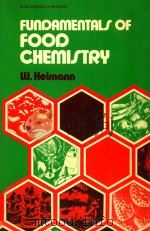
- Fundamentals of food chemistry
- 1980 Ellis Horwood limited
-
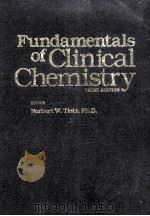
- FUNDAMENTALS OF CLINICAL CHEMISTRY THIRD EDITION
- 1987 W.B.SAUNDERS COMPANY
提示:百度云已更名为百度网盘(百度盘),天翼云盘、微盘下载地址……暂未提供。➥ PDF文字可复制化或转WORD
